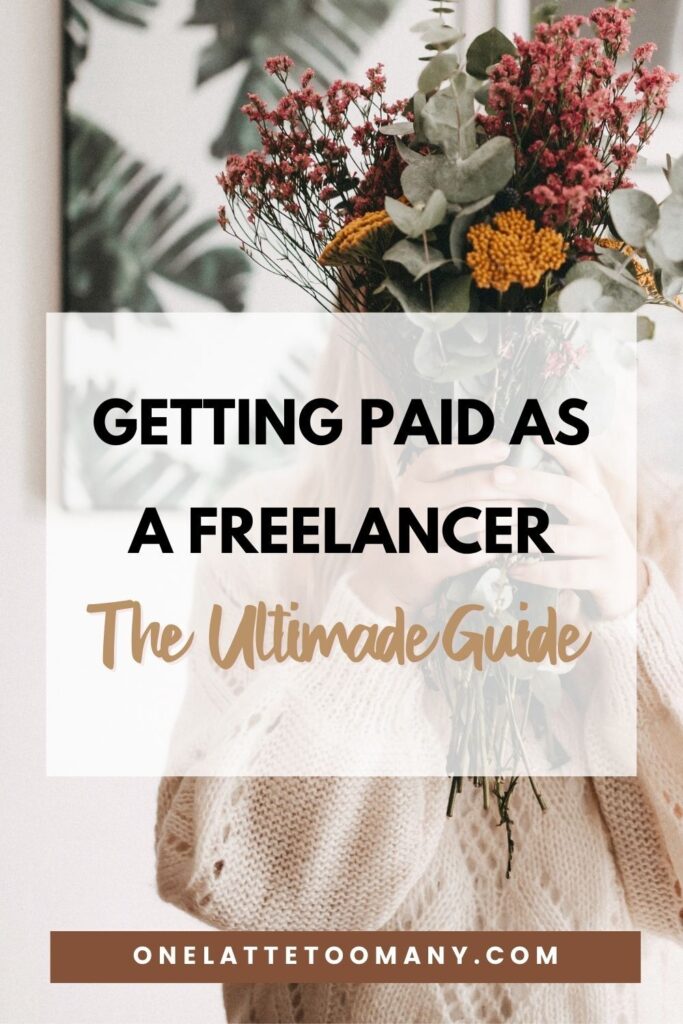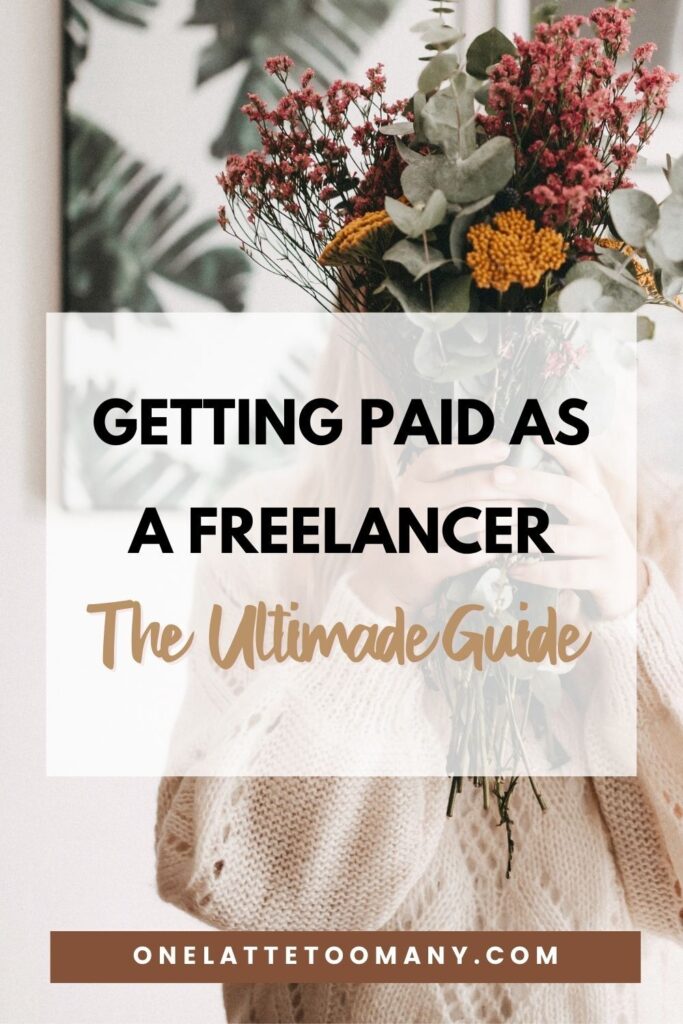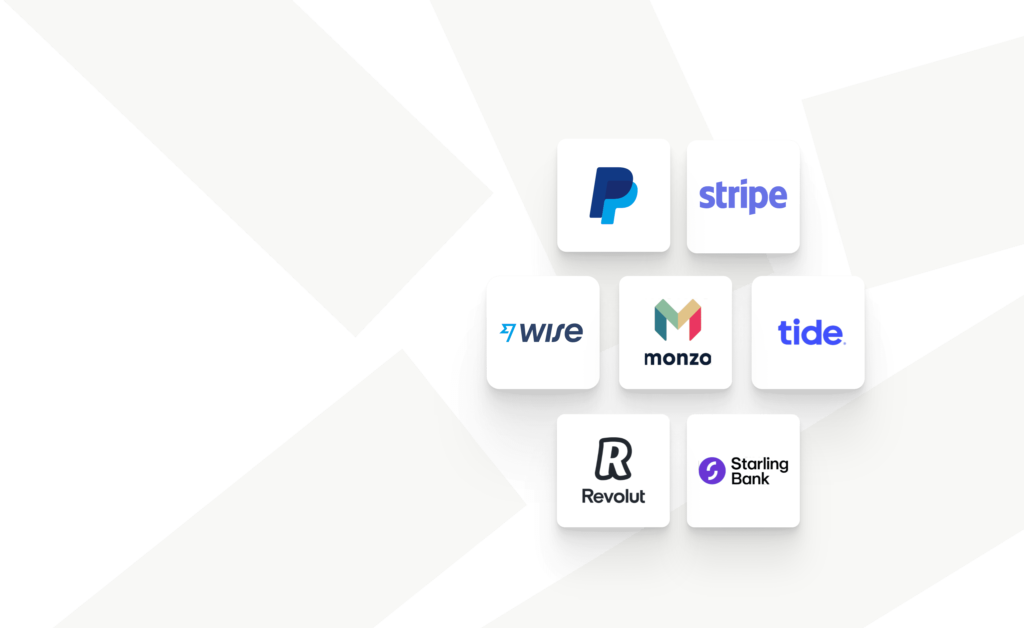So you’ve managed to secure a couple of clients and now you’re at that point thinking to yourself “How on earth do I get paid?” Well, today I wanted to discuss how to get paid as a freelancer the faster and more reliable route.
The main hurdle in your freelance journey may seem to be signing clients. And once you’ve mastered that skill, you get a sense of optimism that everything is going according to plan.
But of course, we want to avoid at all costs not getting paid on time or worse not getting paid at all.
If you’ve been in the corporate world, you’ve most likely got handed a paycheck or a notification of a deposit in your account. Now, as a freelancer, you might start working through online platforms and feel safe at first when getting paid through them as intermediaries.
However, those intermediaries do take their cut, which is often about 20% of what you’ve earned, which is insane…
So, it’s probable that at one point you might want to work directly with your client without any kind of middle man, to avoid those fees.
Fortunately, as daunting as it might seem to work directly with a client, here’s everything you need to know about best practices you can apply to get paid as a freelancer and enjoy your journey in a healthy state of mind.
Related Reads:
- Business Organizational Notebook: Organize Your Business In One Single Notebook
- My Mid-Year Reset Routine
- How To Activate Your Creative Flow
- Tapping Into Your Inner Child As A Solopreneur
- How To Take Fridays Off, But Still Be Super Productive

Tips To Follow To Make Sure You Get Paid As A Freelancer
1. Client Background Check
Before you get all excited with butterflies in your stomach, it wouldn’t hurt to do a little research on the potential client. One of the major drawbacks in the freelance world is that you can’t trust everyone.
Unfortunately, not everyone in the online world has the best intentions. So beware of this, and do a bit of investigation online and check out their legitimacy.
2. Get A Contract Signed
Before beginning the job and going over the deliverables, make sure you set a legal agreement between both parties in a form of a contract. This creates accountability on the client’s part when you include all the clauses and non-disclosures as well as provisions if you don’t get paid on time.
Include payment options that clients are comfortable with, when they’ll expect an invoice, what extra charges will incur upon late payment, project timeline, ownership rights, and the scope of work.
3. Invoice On Time
Once the project has been completed, it’s important to invoice clients promptly to avoid any delays and keep the money flowing in. It’s up to you if you want to get paid weekly, bi-weekly, or on a monthly basis.
Make sure most of your invoices fall in the same timeline. Also, don’t wait too long to remind them, because they might get an impression that you’re in no hurry to be paid. Keep records of everything you’ve sent to keep your accounting easy to handle.
4. Upfront Payment
Many beginning freelancers can find it intimidating to charge clients in advance. But it’s a great way to not worry about delayed payments so you can focus on delivering your best. I understand that many of you might argue that you don’t want to jeopardize your relationship and come off as demanding and paranoid.
However, you don’t want to be dealing with difficult clients – especially new ones who might claim you haven’t met expectations or do some extra work and then refuse to pay you.
So, it’s a good idea to ask for payments in advance, especially for big projects. A common practice freelancers do is ask for 50% of the total amount when signing a contract, and the remaining 50% once the project is completed. It’s up to you how you want to set up upfront payments as long as the client agrees.

Different Ways To Get Paid As A Freelancer
1. Hourly
With an hourly rate, you basically charge your clients X amount multiplied by the time you’ve spent on a given project. So for example, if you charge $10/hour and you managed to finish the work in 5 hours, you bill your client $50.
A time tracking tool is a must for every freelancer out there if you’re working on hourly projects. It helps to log your time spent on tasks, maintain a work record, and take screenshots. There are several popular desktop and mobile apps like Hubstaff, Hive, and ClickTime that have features like project allocation, adding team members, performance review, etc.
Using these tools helps bridge a level of trust between you and your client. So, no more getting annoyed with the client’s unnecessary demand on proof of work. You get to understand how your workflow and productivity level.
However, there are caveats if you plan to go this route. As you get better at your job and become more productive, you basically reduce your work hours and get penalized by getting paid less. Also, scaling your freelance business can be difficult because your time is tied to your income and there are not many hours you can fully commit.
2. Fixed
Fixed or project-based is basically getting paid once a task or a list of tasks is completed and delivered to the client. The freelancer and the client come to an agreement on the scope and expectations of the project regardless of how much time it would take to complete them.
However, be mindful of what you agree to deliver to your clients. Because if you don’t, a client may ask for favors that may consume a lot of your time. Deliverables with crystal clear expectations are what should be discussed early on in the contract.
3. Retainer Based
With a retainer-based contract, a client basically pays you on a recurring basis to retain you either on an hourly or project-based. If it’s an hourly retainer, a client expects you to set aside an X amount of hours dedicated to only serving their business. As for a fixed, a client may ask to deliver certain agreed tasks on a month-to-month basis.
A massive advantage with retainers is basically you build a long-term relationship with your client and you don’t worry about finding new clients constantly and keep yourself fully booked (I talk more about it here!). You know for a fact that there’s going to be consistent work to deliver.
Make sure that the services you provide are a recurring need and not a one-off service for a client. For example, a client may need you to deliver four or six blogs every month or wants you to organize their work schedule or maintain a team.
4. Commission Based
When freelancers decide to work on a commission basis, they usually take a percentage of the profit or income of a specific project. For instance, a client may agree to share their profits generated from a sales page or a course that you helped design.
This method is great if you’re great at sales and know for a fact that the product you created is going to sell like hot cakes. On the flip side, it can be extremely risky if you don’t have any idea of the client’s business and you agree to get paid only on a commission.
Why Being On A Retainer Is The Best Way To Get Paid As A Freelancer
Working with a client on a retainer is probably my favorite way of making sure I get paid for my services. It goes without saying that this is amazing for you as a freelancer since you have a steady income coming in, which is more predictable.
By setting up a retainer agreement, the client has the insurance that you are available for them whenever they need you, so it’s beneficial for them to pay you a monthly fee and they can have you on speed dial.
But a big disadvantage of being on retainer is the feast or famine cycle… As a freelancer, the feast or famine cycle means you’re either crazy-busy with client work, working 40+ hours or you have extremely low activity with not enough to do.
Having too much freelance work at the same time may seem like a luxury problem to have, and in some ways, it definitely is. But when multiple clients’ deadlines overlap, you’re in danger of not delivering on time and decreasing the quality of your work.
Why You Should Raise Your Prices
Once you start getting better at what you do, you might reach a point where you’ve taken too many responsibilities and feel overwhelmed. I agree to a certain extent when starting out as a freelancer, you need to just put yourself out there consistently, sign as many clients as you can, stack up as many experiences in your portfolio, and expect to be paid less.
But, do you think you’re going to sustain like this for long? As a solopreneur, you probably promised yourself consistent 4-5 figure monthly incomes and spending more time for yourself and with loved ones.
This is why raising your prices will help you transform your business to the next level. Instead of signing several clients who opt for cheap services, you on the other hand can sign those who are more serious about results and perceive your services to be a premium. You can take on fewer clients on a long-term basis and at the same time scale your business even further.
The Best Payment Method For Freelancers
Providing multiple payment options is essential, especially if your clientele is international. You don’t want to be chasing payments and sending invoices when payday comes around.
Fortunately, there are several safe payment methods that are acceptable worldwide to help you streamline your invoicing processes for you.

1. Stripe
Stripe is a great payment method for beginner freelancers as the steps are easy to follow and you can set up an account in a couple of minutes. It is functional in over 130+ countries so you don’t have to worry about finding different mediums for receiving payment.
You can issue invoices to your clients by registering them as a customer on Stripe. They can then pay you through the platform with their credit card. You can also add in your bank account details so that your fees can be transferred to you directly. There are no monthly or setup fees but they charge 2.9% of the amount plus a $0.30 flat fee per transaction.
2. PayPal
One of if not the most accepted and recognized platforms for transferring money is PayPal. Just like Stripe, billing software is integrated within the platform, so your clients will send you payments directly to your PayPal account.
In addition, PayPal also offers electronic money transfers which are used by organizations and online stores to receive payment. Several popular freelance platforms like Fiverr and Upwork have PayPal as their primary method for monetary transactions.
However, do be mindful that PayPal charges a lot of fees for foreign money transfers due to their exchange rates. It can be risky for freelancers as well if a client makes a dispute for whatever reason and often times than not, PayPal provides more protection for purchasers (i.e. your client) than they do for sellers.
Also, there are a lot of horror stories on the internet of freelancers having their accounts frozen for “suspicious activities” without notice. This could be an issue for all of you digital nomads out there who log in from different countries which almost guaranteed will raise suspicion.
Make sure if you do use this platform, it is because it is absolutely necessary and you can’t find any other way to receive your money.
3. Wise
Wise is another great option for freelancers. It’s quite transparent and charges a small fee to accept money across borders when compared to other payment processors.
You can connect your bank account with Wise so you get money directly transferred from the client. Alternatively, you can set up a Wise business account so you can keep the money strictly business-related if you want to which I would recommend as it helps your accounts organized.
4. Revolut (for Europe)
If you are situated in Europe like me, Revolut is a platform that allows you to create an online current account. It operates like an all-in-one banking platform creating a very speedy and cohesive user-friendly experience. So instead of heading over to your local bank physically, you can just set up everything online without all the cumbersome formalities!
Members on the platform can receive and convert 28 currencies without any exchange rate markup. You can set up an account either for your personal or business transactions.
Under the Revolut for Business, there are two options. One is for a company, where you can manage several of your employees’ financial transactions. While the other is a freelancer account, where self-employed individuals or sole traders get to work under their own name.
There are 3 account options for freelancers; you can choose from the Free plan at no charge to the Ultimate which is priced at £25/month. The Free option is suitable for you if you have only a handful of transactions per month. If you plan to open an account with Revolut, it’s a great solution if you prefer easy UK and Europe payment options.
I hope this article was super useful to you in making sure you find the easiest way to get paid as a freelancer. In conclusion, always make sure to make it super easy for your clients to pay you at the end of the day.
Related Reads:
- Business Organizational Notebook: Organize Your Business In One Single Notebook
- My Mid-Year Reset Routine
- How To Activate Your Creative Flow
- Tapping Into Your Inner Child As A Solopreneur
- How To Take Fridays Off, But Still Be Super Productive
What’s your favorite payment method that you like to use? Let me know down below in the comments!

Great article! I love that you target this subject, it can be intimidating to bring up payment when starting out as a freelancer, it’s hard to know where to start, but it’s part of doing business and so important to be clear from the start. These are some great tips! Thank you for sharing!